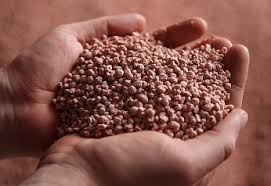
ก.ย. . 08, 2024 10:44 Back to list
NPK 20-10-10
Understanding NPK Fertilizers The Significance of 20-10-10 Ratio
Fertilizers play a crucial role in modern agriculture, significantly enhancing crop yield and quality. Among the various types of fertilizers, NPK fertilizers are some of the most widely used. The term NPK refers to the three essential nutrients that these fertilizers provide Nitrogen (N), Phosphorus (P), and Potassium (K). In this article, we will delve into the specifics of a fertilizer with an NPK ratio of 20-10-10, highlighting its significance and applications.
The numbers in the NPK ratio represent the percentage by weight of each nutrient in the fertilizer. In the case of a 20-10-10 formulation, this means that the fertilizer contains 20% nitrogen, 10% phosphorus, and 10% potassium. This particular ratio is designed to deliver a robust supply of nitrogen, which is crucial for leafy growth, while also providing adequate phosphorus and potassium to support root development and overall plant health.
The Role of Each Nutrient
Understanding NPK Fertilizers The Significance of 20-10-10 Ratio
2. Phosphorus (P) Phosphorus is vital for energy transfer and storage within the plant. It plays a critical role in the formation of DNA and RNA, which are essential for cell growth. This nutrient is particularly important during the early growth stages, as well as for flowering and fruiting. The 10% phosphorus in the 20-10-10 ratio ensures that plants have sufficient resources for root development and reproductive processes.
npk 20.10 10

3. Potassium (K) Potassium is often referred to as the quality nutrient. It helps regulate various physiological processes, including water uptake, enzyme activation, and the synthesis of proteins and starches. The presence of potassium in the 10% concentration supports overall plant health and improves resistance to diseases and environmental stress.
Applications and Benefits
A fertilizer with a 20-10-10 NPK ratio is versatile and can be used for a variety of plants, including vegetables, flowers, and ornamental plants. It is particularly beneficial for crops that require significant leafy growth, like lettuce or spinach, as well as for establishing new lawns or enhancing the growth of existing ones.
Applying this fertilizer can result in quick greening of plants, leading to healthier foliage and improved crop yields. The balanced contributions of phosphorus and potassium ensure that while plants grow vigorously, they also maintain strong root systems and good reproductive health.
Conclusion
In summary, NPK fertilizers like the 20-10-10 formulation are essential tools for modern gardeners and farmers. Understanding the role of each nutrient helps in making informed decisions about fertilizer application, ultimately leading to healthier plants and more productive harvests. As the demand for food continues to rise globally, the smart use of NPK fertilizers will be a critical factor in achieving sustainable agricultural practices.
-
Organic 10-10-10 Fertilizer: Balanced NPK for Healthy Plants
NewsAug.27,2025
-
10 10 10 Organic Fertilizer: Balanced NPK for Healthy Plants
NewsAug.26,2025
-
Organic 10-10-10 Fertilizer: Balanced NPK for Healthy Plants
NewsAug.25,2025
-
Premium 15-30-15 Granular Fertilizer for Vigorous Growth
NewsAug.24,2025
-
Organic Amino Acid Fertilizer for Plants | Boost Growth & Yield
NewsAug.23,2025
-
Calcium Ammonium Nitrate (CAN) White Granular Agriculture Fertilizer
NewsAug.22,2025
